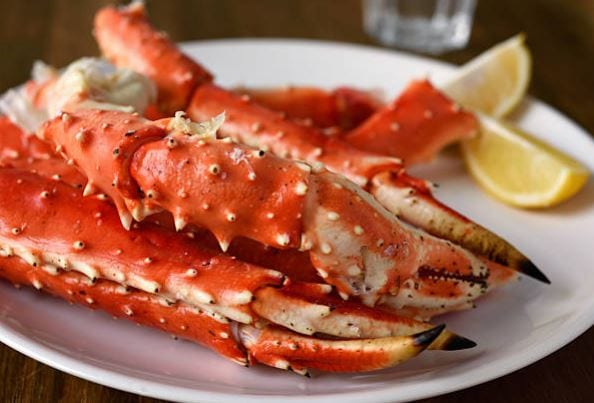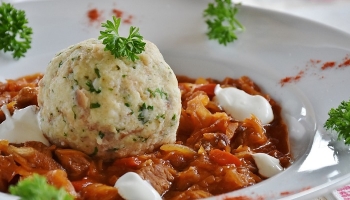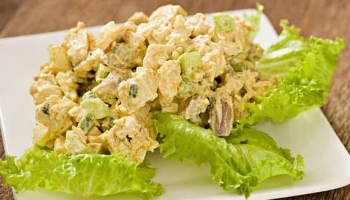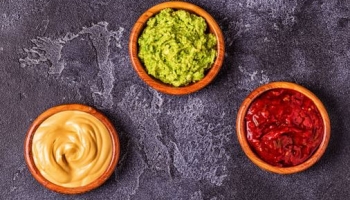For many of us, crab legs are a delightful and savory treat reserved for special occasions. They’re tasty and tend to be expensive, making them a delicacy.
However, as with any seafood, it’s essential to ensure your crab is fresh, prepared properly, and safe to consume so you avoid getting sick.
Many people don’t realize that most fish and other types of seafood carry parasites. Crabs are no exception since they come straight from the ocean’s depths.
Most of the time, these parasites are invisible and safe to consume without causing illness. However, it’s important to know what they are and how to spot them. Here’s everything you’ll need to know about handling the situation the next time you spot black dots on your crab legs.
Table Of Contents:
- What Are Crab Parasites?
- Is It Safe To Eat Crab Legs With Black Spots?
- Why Do Crabs Have Eggs On Their Shells?
- How To Tell If The Crab Is Cooked?
- What Are The White Things On Crab Legs?
- What Diseases Do Crabs Carry?
- How Do You Clean Crab Legs?
- Do Blue Crabs Get Parasites?
- How Do You Clean Crab After Boiling?
What Are Crab Parasites?

The black spots on crab legs are the eggs of a parasite called the marine leech. Marine leeches protect their eggs by laying them on crabs instead of a rock or another underwater surface. This strategy helps them to spread to other parts of the ocean and keeps their eggs safe, ensuring the species’ survival.
Strangely enough, many people consider the presence of these parasites to indicate that the crab legs will contain a lot of meat. A leg that has more parasite eggs will generally be meatier. A leg without parasite eggs will likely not contain as much meat.
In many parts of the world, people look to purchase crab legs with lots of eggs on them, as the eggs are thought to be an indicator of a crab’s quality, and the meat inside is likely to taste extra-delicious.
back to menu ↑
Is It Safe To Eat Crab Legs With Black Spots?
Yes, even though the idea might turn some people off, it is perfectly safe to eat meat from crab legs carrying these eggs. When you cook the crab legs, the extreme heat destroys the eggs. Also, crab legs are generally frozen in preparation for shipping, and the eggs can’t survive being frozen.
Also, these eggs don’t affect the taste or quality of the crab meat in any negative way, so they won’t be ruining your next crab dish. They pose no threat to your health or safety, and it should be comforting to note that the eggs are only present on the outside of the shell and never get inside the shell or have contact with the meat. For the eggs, the crab was just a form of transportation.
Finally, not all black spots on crab legs indicate parasite eggs. Sometimes black spots just show where the crab’s body suffered an injury that later healed. The black color represents an immunological response by the crab to the injury.
back to menu ↑
Why Do Crabs Have Eggs On Their Shells?
Because the bottom of the ocean is exceptionally muddy, it’s difficult for marine leeches to find rocks they can attach their eggs to. This means that crab shells remain some of the only hard surfaces available to marine leeches for laying eggs.
Crabs also move around from place to place on the ocean floor, and in the process, they keep the eggs safe and disperse the hatching marine leeches across the ocean, increasing the leeches’ territory while helping them reproduce.
This process does not harm the crab or the marine leech, and their relationship shows how well they’ve managed to get along with each other in their shared natural habitat.
back to menu ↑
How To Tell If The Crab Is Cooked?
Before eating crab legs (or any other type of prepared crab), ensure that they have been properly cooked to avoid exposing yourself to any foodborne illness. If you have questions about whether your crab is fully cooked, look for the following signs:
● The shell of a cooked crab will be bright red or orange.
● The meat inside a cooked crab will be opaque and white.
If you’ve purchased your crab legs from a fish market, like the frozen department of the grocery store or the fish counter, the legs will have already been cooked. All you’ll need to do when you want to prepare them is reheat them. Crab legs are never commercially sold uncooked.
The only type of uncooked crab that you’ll ever be able to purchase is a whole crab that is still alive and being kept in water, similar to buying a live lobster. The shells of these crabs will be brownish or green in color. When you cook them, the shells will turn bright red or orange and the meat will turn opaque and white. If you are cooking a live crab and don’t notice these signs, it means you need to cook the crab longer.
It generally takes about 10 to 15 minutes to boil a crab, depending on its size.
Are you looking for a better way to distribute the heat on your induction cooktop or use a pot not designed for induction cooking? Check out our review of the best converter discs for an induction cooktop.
back to menu ↑
What Are The White Things On Crab Legs?
If your crab legs have white spots or bumps, they are likely one of two things:
● Any white bumps are probably barnacles.
● Flat white blotches mean the crab may have suffered from white spot disease.
Barnacles form on a crab’s legs when the crab is older and has been in its current shell for a long time. They’re similar to the barnacles that form on the bottom of a ship when it’s been submerged in the ocean for a while.
When you see barnacles on crab legs, it means that the legs came from an older crab, and the legs will likely have more meat inside them. When a crab molts into a fresh shell, the new shell always has extra room in it for the crab to grow into. A crab that has been in its shell for a while will have filled up all the extra space inside the shell with their meat.
It is safe to eat crab legs that have barnacles on them, just don’t eat the barnacles. They do not affect the meat at all.
Otherwise, the white coloring on the crab legs could be from white spot disease, which is potentially fatal to crustaceans. White spot disease is not dangerous or contagious to humans. Still, it’s always important to properly cook your crab before eating it to avoid other potential pathogens.
The white spots on a crab are more likely to be barnacles than the result of white spot disease. Barnacles are hard and stick out on the surface of the shell, while white spot disease looks like flat white blotches.
back to menu ↑
What Diseases Do Crabs Carry?
Crabs can also carry diseases caused by bacteria, such as Vibrio cholerae and Vibrio vulnificus, as well as several parasites. For example, after you ingest the Paragonimus westermani parasite, it can travel up to your brain or lungs and live there, destroying your health in the process. It can even cause paralysis or death.
Since some bacteria and parasites found on crabs can make you sick, you should never consume raw crab. For this reason, even crab meat used in sushi needs to be cooked. You will never find raw crab available on a restaurant menu anywhere, as it doesn’t taste very good and poses major health risks.
back to menu ↑
How Do You Clean Crab Legs?
Whether your crab legs are fresh or frozen, you’ll want to take a few minutes to rinse them off in cold water. Generally, you should clean crab legs before cooking them to ensure that you remove any bacteria that may still be present on the outside of the legs. Rinsing the legs will also remove stuck bits of sand or grit and make the legs easier to cook.
If you want to take your cleaning a step further, start by soaking the legs in salt water. This method helps to dislodge any sand that may remain in the legs, and it also helps remove bacteria.
Simply place the crab legs in a large pot with a tablespoon of salt and add cold water until the legs are fully submerged. Leave the crab legs to soak for 30 minutes, then remove them from the salt solution and rinse them in fresh cold water.
Some people prefer to use a mixture of vinegar and water instead of salt. For this method, mix one part vinegar with three parts water. Place the crab legs in the solution and let them soak for about 15 minutes, then rinse them off and prepare them as usual.
back to menu ↑
Do Blue Crabs Get Parasites?

Blue crabs, found in the western Atlantic and Gulf of Mexico, are a very popular dinner option when they’re in season. However, they are affected by certain parasites, some of which have contributed to a decline in the blue crab population (in addition to overfishing, pollution, and loss of habitat).
One of the most common parasites to affect blue crabs is a single-cell organism called Hematodinium. This small parasite is deadly to blue crabs and can quickly reduce an entire population of them by 50 to 75%.
Fortunately, this parasite is not harmful to humans, and your chances of getting sick from eating properly prepared blue crab are very small.
But research has also shown that in addition to this specific parasite, many other types of parasites and bacteria make their homes inside of blue crabs.
If you’ll be eating blue crab, first make sure that the crab was alive before it was cooked. If a crab dies before it is cooked, it has a greater chance of having harmful bacteria that can multiply and spread, and also, the crab won’t taste good.
Blue crab ordered from a restaurant or sold cooked at a fish market will always meet this cooking requirement and be safe to eat.
back to menu ↑
How Do You Clean Crab After Boiling?
After boiling the crab, you’ll need to clean it properly before serving it. Once you remove the crab from the boiling water, allow it to cool a bit before cleaning it. Otherwise, you risk burning your hands. The crab should be cool to your touch when you start the cleaning process.
Note that if you purchased frozen whole crabs, you do not need to boil them first before performing this cleaning process. However, you do need to let them thaw completely. Letting a frozen crab sit in some cool water for about 20 minutes should thaw it enough to let you clean it without problems.
Remove The Face, Abdomen, and Gills
After the crab has cooled or thawed, you’ll start to remove the unwanted parts. Start with the face by cutting off the crab’s eyes and mouth with sharp kitchen scissors (or a sharp knife like a Kiritsuke). Make sure that your knife or scissors are sharp enough to cut through the shell without hurting yourself or having to struggle too much. If you’re looking for a good set of knives with cutting power, check out our knife sets under $100 for some good options.
Next, pull off the crab’s abdomen plate. The abdomen plate is a small triangular plate on the crab’s underside in the center of the shell.
After you’ve removed the abdomen plate, you’ll see the spongy gills. Use your fingers to pull these off the crab. Basically, during this step, you’ll be removing everything that’s not meat.
Rinse And Cut The Crab Into Quarters
Next, you’ll need to rinse the crab off under cold water and continue the cleaning process. Start by twisting off each of the crab’s legs at its base. Put the legs aside, and then use a very sharp knife to cut the body into quarters. Finally, remove the claws at the joint using a claw-cracking tool.
You can now serve the crab meat as is, either directly in the shell or by removing the cooked meat from the shell and serving it by itself. Of course, you can also use crab meat as an ingredient in any number of recipes.
Note: If you performed these cleaning steps on a defrosted crab, you will still need to warm the crab in boiling water before serving or removing the meat from the shell.
Shanny
Shanny not only has an exceptional understanding of the foodie mindset and how nutrition works, she has also achieved her Master’s Degree in Education. Outside of her academic achievements, she loves writing food blogs. It's so much more than a list of meals though! Shanny creates helpful cookware guides and delicious recipes that are easy to follow. She does all of this as a food blog writer because she loves it. That's why she spends lots of time testing out different recipes in her own home. She truly is a one-of-a-kind foodie, from her home to yours - with a story to tell, new recipes to indulge in and new tips to tantalize those tastebuds.












